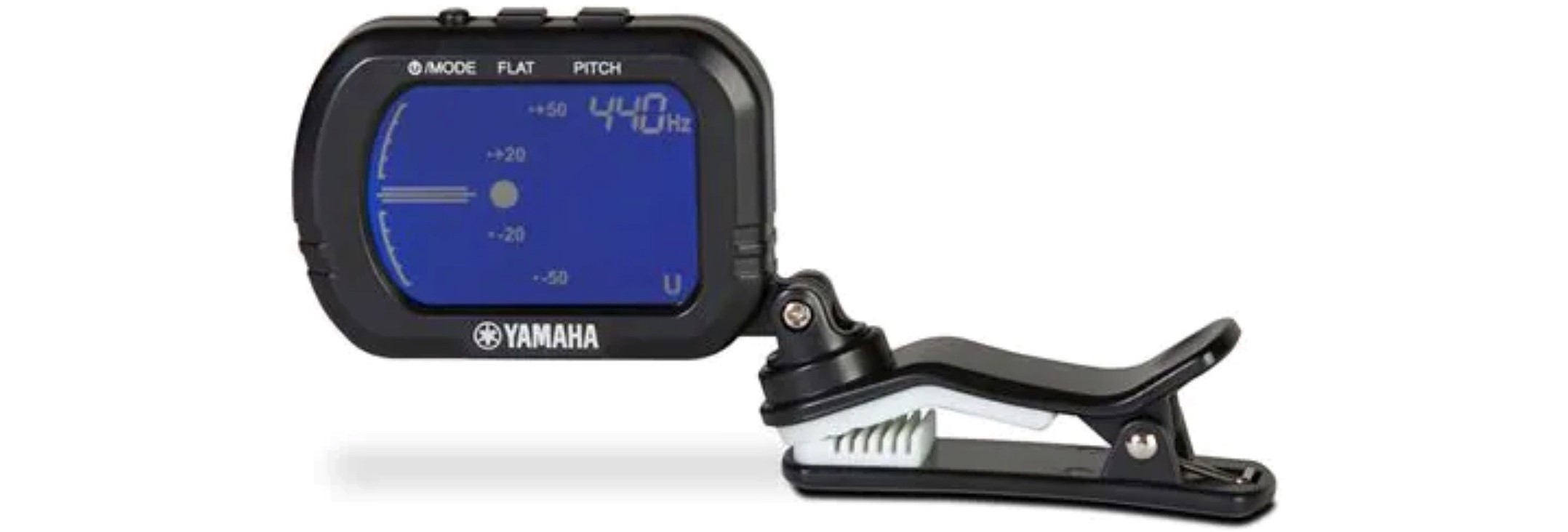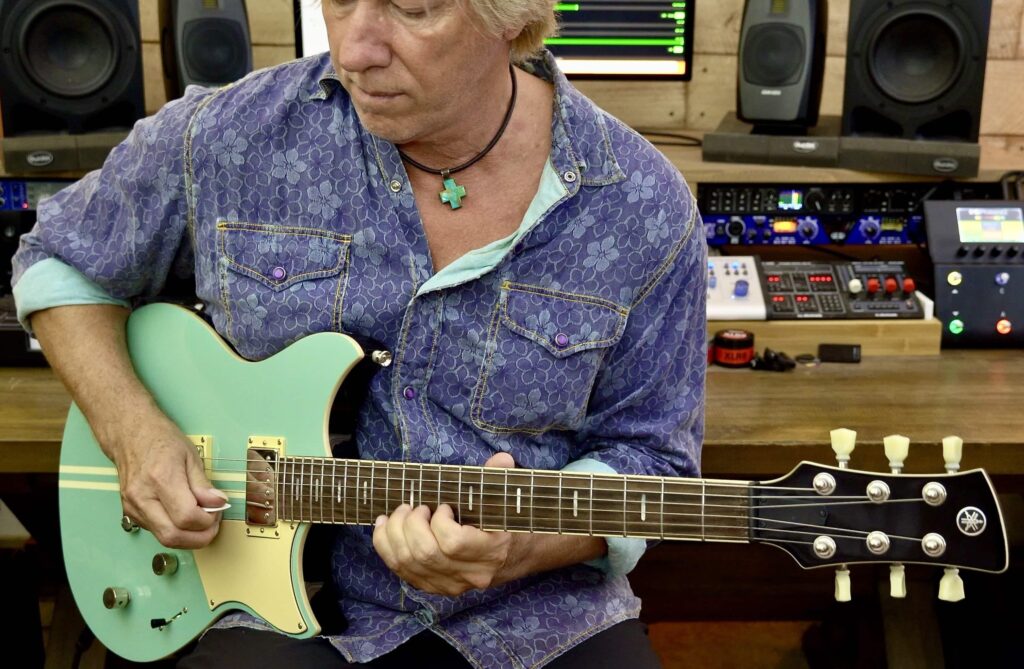How to Choose Your First Guitar
Looking to find the instrument that’s right for you? Here’s what you need to know.
Congratulations on deciding to buy your first guitar! Whether you’re looking for an acoustic or an electric model, a guitar can make your life more fulfilling and fun. One of the advantages of taking up guitar, as opposed to other instruments, is that you can learn enough chords to play some songs relatively quickly. The feeling of accomplishment you’ll get is likely to inspire you to put in plenty of practice time, and like so many worthwhile endeavors, the more you put into it, the more you will get out of it.
If you’re buying a first guitar for your child, that’s great news too! Studies have shown that music education and a musical household can benefit childhood development. It can also help with spatial skills and improve test scores and IQ. Those are the measurable benefits, but the intangible “vibe” or “mojo” of being a musician is the most fulfilling part. And that feeling is easy to access any time by just picking up the guitar.
So what do you need to know to find the ideal instrument? Let’s start with some basic terminology and definitions.
Acoustic vs. Electric
There are two types of guitars: acoustic and electric. An acoustic guitar is an instrument that creates its sound without needing an amplifier. An electric guitar requires an amplifier to be heard in all its glory. Acoustic guitars always have hollow bodies made of wood; electric guitars can have either hollow or solid bodies (again, usually made of wood), though some electric models are termed “semi-hollow” because they have a solid block of wood running through the center of their otherwise hollow body.
All electric guitars use steel strings, as do many acoustic guitars. Those kinds of strings tend to be bright-sounding and vibrant. Some acoustic guitars, typically termed classical guitars, use nylon or composite strings instead, which have a gentler, more mellow tone.
There are also acoustic guitars that come with built-in electronics so you can plug them in and amplify their natural sound. Such instruments are sometimes called “acoustic-electric” guitars.
How Guitars are Built
Knowing a few things about the construction of a guitar will help you in your search for the right instrument. Here’s an illustration that shows the various parts of an acoustic guitar:

In both acoustic guitars and electric guitars, the density and weight of the woods used help determine the tone and resonance that the guitar produces.
Most of the tone of an acoustic guitar gets generated from the wood in its top, which is the face of the instrument. Spruce is commonly used for steel-string acoustic guitar tops, although sometimes you’ll see mahogany. In the case of classical nylon-string guitars, you’ll occasionally encounter models with cedar and cypress wood tops. A guitar with a solid top will produce a richer tone than one with a laminate or plywood top. The wood used for the back and sides of an acoustic guitar is equally critical for tone creation. Typically, guitar manufacturers use mahogany, nato, rosewood or maple for fuller tone. Make sure to find out the composition of the wood in a guitar before buying it.
The woods used in the construction of electric guitars are usually alder, basswood, ash, pine, maple or mahogany. Some models will even use one kind of wood for the back of the body and a different one for the top. For example, you can find electrics with a maple top on a mahogany body. The type and combination of woods used has a major impact on the tone of an electric guitar.
Find Your Fit
You’ll want your guitar to be comfortable to hold and easy to play. After all, if it doesn’t meet both of those criteria, you might get discouraged from practicing! One critical factor in selecting a guitar is finding one that’s size-appropriate for you. An instrument that’s too big or too small will make learning difficult and not as enjoyable.
To determine if a guitar’s size is right for you, try sitting down and holding it in your lap. See if you can reach the far end of the fretboard (the part closest to the tuning machines) with your left hand. If you can’t do that, choose a guitar with a neck that has a shorter scale length. The scale length refers to the distance between the nut and the bridge. (Refer to the illustration above to see where those components are.) Another advantage of a short-scale neck is that it reduces string tension, making fretting (pressing down the strings) easier. The Yamaha FG800J is designed for easy playability and has a short scale length.

The shape of a guitar’s body also affects comfort. For example, a concert-style shape, such as the one used by the Yamaha FS800J, is narrower across the waist and has a shallower depth than the larger Dreadnought body size (which is used in the Yamaha FG800J), making it easier to hold.

The Yamaha STORIA line of acoustic guitars are also a great choice for beginners, as they all have short-scale necks, small bodies and low action. (See the “Tweaked for Comfort” section below.) Although designed for first-time players, they offer quality and features you can grow into, including built-in electronics.

If you’re especially petite or are buying a guitar for a child, you might want to consider a compact acoustic guitar such as the Yamaha JR1 or the three-quarter size Yamaha JR2. Both models are mini-versions of the famed Yamaha FG Series of acoustic guitars, delivering big tone despite their small size. They’re also ideal for practicing in the park, on the beach, or anywhere your muse takes you.

It’s best to try out guitars of different shapes and sizes at your local music store and see which one feels most comfortable. There’s a model out there that’s perfect for everyone!
Tuning In
Another important issue is the quality of the tuning machines (often called “tuning keys” or “tuning pegs”). They should turn smoothly and easily and shouldn’t bind or jump when you turn them.
But even when playing an instrument with the best tuning machines, beginners sometimes have trouble getting their guitars in tune. The solution is simple: make a small investment in an electronic tuner. Today’s tuners are simple to operate and can help you save time and frustration. There’s no shame in using one, either: Virtually all guitarists — even the top professionals — use them.
Clip-on tuners are the easiest to use. They attach to the headstock and sense the pitch of a string through vibrations in the wood. A good choice here is the Yamaha GTC1, which can be used not only for guitar, but other stringed instruments such as bass and ukulele too.

Tweaked for Comfort
As stated earlier, when you buy a guitar, it should be comfortable to play. Of course, you can’t change its body size, type or scale length, but there are many aspects that can be adjusted. Most can be done on your own, but if you’re a beginner, you’re best to have them done by a qualified luthier (a craftsperson who builds and repairs guitars and other stringed instruments). Most music stores can refer you to such a person, or may even have one on the premises.
The most common problem you might encounter is that its action — the height of the strings over the fretboard — is too high. Low action, like you’ll find on Yamaha STORIA guitars, improves playability, but if it’s too low, there can be string buzz or some notes may not ring out properly (a phenomenon known as “fretting out”), so some compromise may be in order.

Another common problem is a guitar being unable to play all its notes in tune, which requires adjusting its intonation. In the hands of a skilled luthier, this is usually fixable if the basic construction of the guitar is sound.
If you find a repair person you like, try to build a long-term working relationship with them, similar to what you do with a good auto mechanic. You want to find someone you can trust. Someday, you may end up doing the maintenance work yourself, but in the meantime, leave it to the professionals.
Add a Case
To protect your new instrument, a case is necessary. Many beginner guitars come with one; if not, it can be bought separately. Alternatively, you can opt for a gig bag like the Yamaha AG-SC, which can have either soft or semi-rigid sides and is typically made from a heavy-duty fabric or leather, with padding for protection. Gig bags are generally lighter than cases and most offer shoulder straps. Those with a single strap allow you to sling your guitar over your shoulder; a double strap lets you carry your guitar like a backpack, keeping your hands completely free.
A hardshell case like the Yamaha AG3-HC provides the most protection from bumps or the occasional drop — although there are no guarantees your guitar won’t get damaged if you drop it while it’s in the case. However, hardshell cases are heavier and typically more expensive than gig bags, and they don’t have straps, so you can’t carry them as easily.

Consider a Guitar Bundle
You can simplify the process of finding and purchasing all the gear you’ll need with a bundle such as the Yamaha GigMaker. These comprehensive and affordable packages include the guitar itself, as well as a tuner, strap, cable, gig bag and even picks. There are versions available for steel-string acoustic, classical nylon-string acoustic and electric guitars; the latter also includes a practice amp.

Click here for more information about Yamaha guitars.















